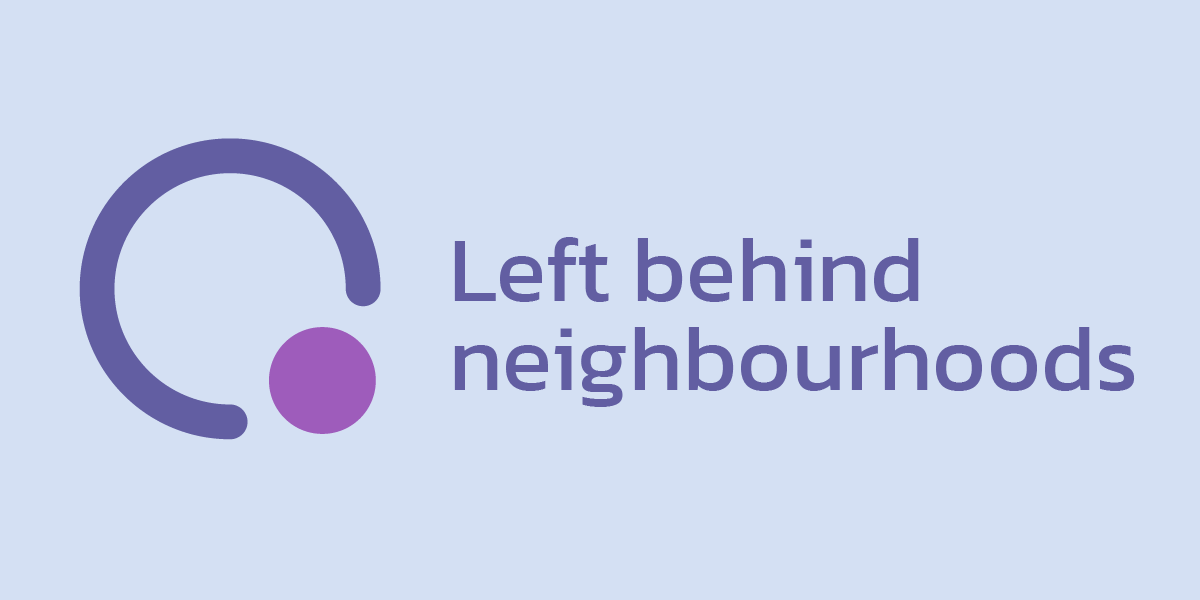
Analysis of the early impacts of COVID-19 has shown that there are drastic differences between different groups and communities, including widely reported analysis on the disproportionate impact on BAME groups as well as the impacts upon the most deprived areas
Our analysis, ‘Communities at risk: the early impact of COVID-19 on ‘left behind’ neighbourhoods’, commissioned by Local Trust for the All-Party Parliamentary Group on ‘left behind’ neighbourhoods focuses on the specific challenges ‘left behind’ areas face in relation to COVID-19.
The report builds on our original research with Local Trust on ‘left-behind’ areas. This defines ‘left behind’ areas as those neighbourhoods with the 10% highest need and deprivation in both the Index of Multiple Deprivation and the Community Needs Index.
This new analysis looks at the factors that make communities more vulnerable to COVID-19 (eg. clinical vulnerability and presence of vulnerable groups) as well as the early response and impact to left-behind areas (eg. economic impacts and community response).
A short summary of some of the initial findings below.
The British Red Cross Vulnerability Index identifies ‘left behind’ areas as more vulnerable to impacts of the pandemic than across other similarly deprived areas.
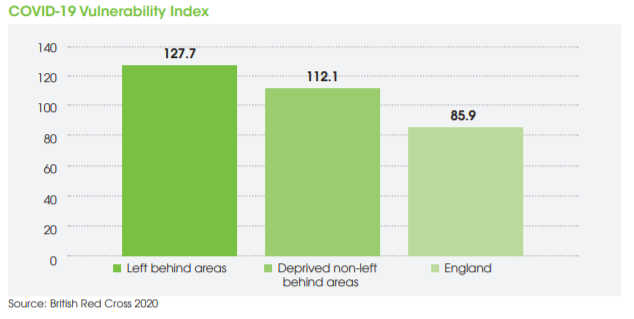
The current mortality rate from COVID-19 is lower in ‘left behind’ areas – though this partly reflects the younger age profile in these communities.
However, there is strong evidence to suggest that the pandemic poses a greater risk to health in ‘left behind’ areas for several reasons:
- There are higher proportions of people with long-term illness or disabilities
- There are higher proportions of people with high risk health conditions including cancer (especially lung cancer), obesity, asthma, chronic kidney disease, diabetes and coronary heart diseases
- People in ‘left behind’ areas are more likely to work in health sectors and have higher exposure to the virus.
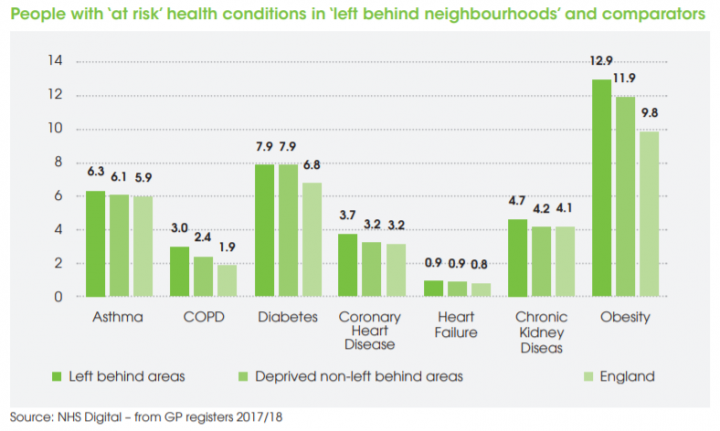
‘Left behind’ areas are experiencing notable economic impacts arising from the pandemic and subsequent lockdown.
- Unemployment has risen sharply, with ‘left behind’ areas experiencing a faster rise in unemployment in between March and April than elsewhere in the country – more than one-in-ten working age adults (10.6%) are now unemployed across ‘left behind’ areas (compared to 6.5% across England as a whole)
- Of those still in employment, one-in-four are currently furloughed (across ‘left behind’ areas and non-’left behind’ areas alike).
‘Left behind’ areas have a relatively high proportion of vulnerable communities who are likely to require additional support.
- There are relatively high numbers of people with mental health or learning disability challenges who will need support from health and social care services
- There are relatively large numbers of pensioners living alone and lone parents who may be at greater risk of social isolation
- There are a higher proportion of people in ‘left behind’ areas providing unpaid care than across other similarly deprived areas
- However, in general, people living in ‘left behind’ areas have been less impacted by living environmental challenges during lockdown, with lower levels of overcrowding and higher proportions of people with access to private gardens than the national average.
Despite all of these factors, there is less evidence of a strong response from the voluntary and community sector in ‘left behind’ areas
- There have been relatively fewer mutual aid groups established in these areas (3.5 per 100,000 people compared to 7.7 in similarly deprived areas and 10.6 per 100,000 across England as a whole)
- Lower levels of grants have been issued in response to the pandemic to organisations operating in ‘left behind’ areas.
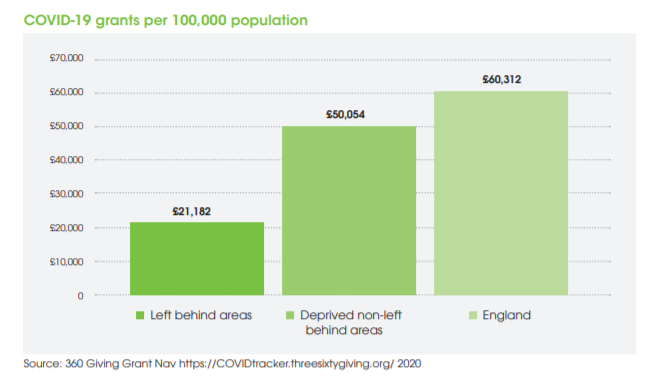
This is at one level unsurprising, as these areas have been identified as ‘left behind’ in part due to the relative lack of community and civic infrastructure. However, it highlights the additional challenges these communities face in responding to the heightened social, economic and clinical challenges posed by the pandemic.
Read the full analysis at ‘Communities at risk: the early impact of COVID-19 on ‘left behind’ neighbourhoods’ and see ‘Left behind? Understanding communities on the edge’ for the original piece of research into ‘left behind’ areas.
Find out more about our research services.
Featured posts

Research Projects
Following the release of the second Everybody needs good neighbourhoods report, Stefan…
More
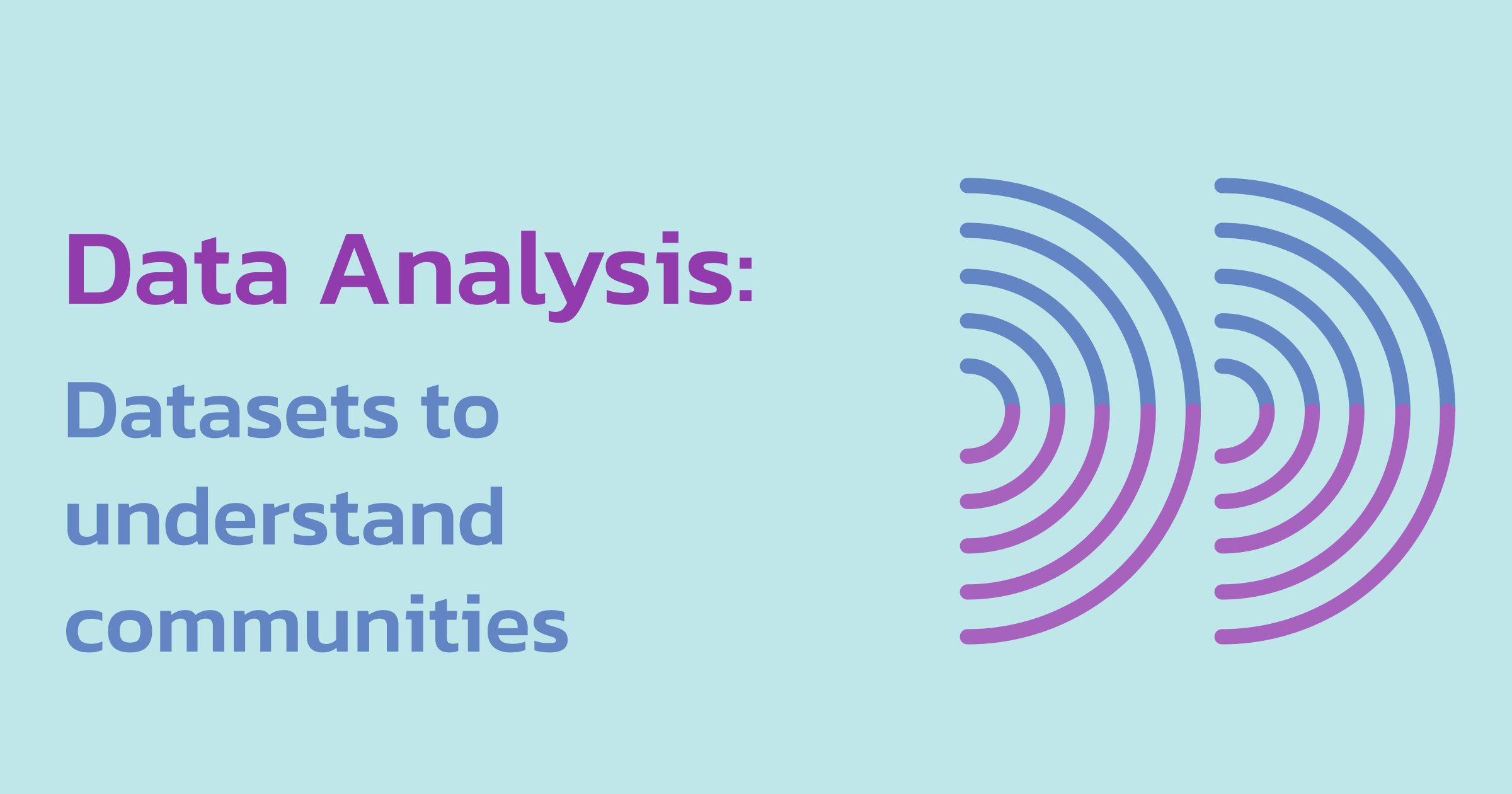
Data analysis
The Community Life Survey (CLS) is an annual survey commissioned by the…
More
